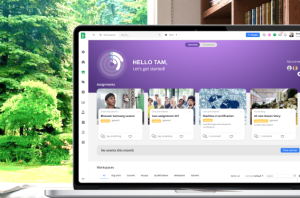So, at this point in the process, you’ve already chosen an LMS. Congratulations! You’ve carefully carried out research and selected the one you believe is the best suited to your organisation. So, what’s next? It’s time to get ready for the set-up and installation of this LMS.
While these steps may seem long-winded and time-consuming, they will eventually avoid the constant irritation of trying to fix problems and they result in a smoother and faster LMS deployment.
Unfortunately, it’s not a one-step process to introduce an LMS to your organisation. It requires careful consideration of what your organisation needs, and how this product needs to be adapted and installed to meet these specific needs.
In this article, the stages for the deployment of an LMS will be clarified in the format of risk management. This format helps you to understand the difficulties you may face in the process and how to overcome them effectively.
A key risk: Incorrect data is received from other Learning Management Systems
A huge problem that arises in the installation of an LMS system is the smooth transfer of the correct data.
A learning system is an active and breathing system. It has many stakeholders who need to use the system and perform activities that drive their productivity and provide them with results. This system should allow the division and allocation of data that describes the users such as seniority, position, occupation, phone number, language, email address, recent activity, and more.
What problems can arise with data transfers?
One problem that typically arises is that data that comes from other organisational systems may be written in different forms and styles. The result of this is that there is difficulty in creating specified rules that define target populations according to the occupation of the users. Fully mapping the fields of data may not be possible. Some data fields may fall through the gaps and require manual entry.
Another problem that arises is maintaining the organisational hierarchy in the new system. Certain people, who aren’t in management positions, shouldn’t have access to all data, for data security reasons. They shouldn’t be able to perform and approve certain activities. How do we implement this same hierarchy into your LMS? This is something that needs to be clarified before you launch your LMS deployment project.
For the LMS to be a success, the organisational structure must be precise and in line with your company’s hierarchical structure. Sometimes, it’s also necessary to use matrix structures as a complete solution for the diverse learning needs of your organisation. A matrix structure is a combination of two or more types of organisational structures. This hybrid structure is only defined in the learning system to help the LMS be perfectly installed.
How to avoid this risk?
It’s very important to understand the importance of the quality of the data ahead of time to understand how to tackle this in the migration process, or even at the very beginning of the project. Sometimes it’s worth trying to go live with users loading optimised files and delaying the activation of an automatic interface (the API), for the processes managed in the system to work properly.
In conclusion
Being aware of LMS deployment risks before they occur speeds up the process of finding and implementing a solution. Our next article will detail the next risk to prepare for: not meeting deadlines.
Blossom’s blog contains more tips and information from the digital world for complete organisational management.








